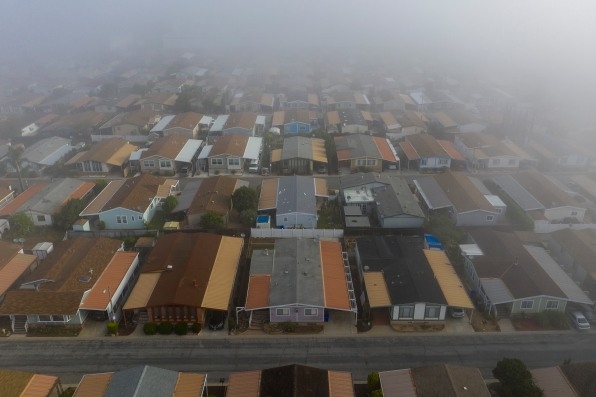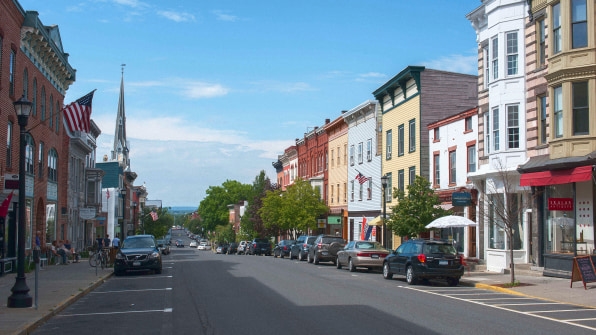In voicing his intention to vote “no” on Biden’s Build Back Better package, Senator Joe Manchin has taken particular issue with the extension of the enhanced child tax credit, a life-saving measure for many families whose abrupt ending could throw 10 million children back into poverty. With extra dollars and coverage for more parents, including those without work, the expansion is essentially a type of guaranteed income. Advocates of this no-strings-attached style of cash assistance say the tax credit, despite Manchin’s objections, has been an encouraging sign that the government and American people could be open to providing guaranteed income on a national scale.
In 2021, an array of local guaranteed income pilots sprung up across the country, with the goal to demonstrate efficacy, and ultimately prove they can be done federally. City pilots tend to serve specific in-need populations rather than everyone in one area—partly due to limited funding, and partly because some believe that targeting by socioeconomic level or ethnicity is a more effective way to address systemic changes. “I always think things should be targeted,” says Jhumpa Bhattacharya, vice president of programs at the Insight Center for Community Economic Development, an organization dedicated to building inclusion and equity for underserved communities. “By talking about this as a race-neutral thing, by not targeting, we’re actually causing harm.”

In January, Compton began a two-year guaranteed income trial, in which the city sent out payments of varying amounts (more to parents with children, for example) to “low-income Comptonians”—those earning less than 200% of the Supplemental Poverty Measure—and to those excluded from federal assistance. Called the Compton Pledge, the pilot explicitly aims to include as recipients “immigrants regardless of legal status, the formerly incarcerated, [and] service workers denied a fair wage.”
Other cities have taken even more specific approaches to help give economic boosts to niche communities. Columbia, South Carolina, is distributing cash to 100 Black fathers. Gainesville, Florida, will send payments to 115 people reentering society from prison or jail. Pittsburgh will target poverty and inequity, but with a particular emphasis on Black women, for whom 100 of the 200 payouts will be reserved (the other half will be randomly selected from households in low-income zip codes). San Francisco launched one dedicated to 130 struggling artists impacted by the pandemic.
Richmond, Virginia’s program, which targets poor households, and which is slated to expand, has consciously included families who don’t earn enough to survive, yet earn more than the maximum to qualify for social benefits. This inclusiveness is a key tenet for guaranteed income, in reaction to the stringent eligibility requirements of typical public assistance.
2021 also showed that guaranteed income has large-scale potential beyond small municipalities. In announcing its Big:Leap program to send $1,000 a month to 3,000 residents, Los Angeles’ became the biggest guaranteed income pilot in the U.S.; Chicago will similarly start a pilot in 2022. Atlanta has two distinct pilots: a citywide one, and another for 300 Black women living in the Old Fourth Ward. In California, where pilots already exist in San Francisco, Oakland, Marin Country, and elsewhere, Governor Newsom dedicated in 2021 $35 million to support current or future pilots, showing broader acceptance of the concept.
This emergence of public funding is one of the highlights of 2020 to Michael Tubbs, former mayor of Stockton, California, who started Mayors For a Guaranteed Income, an alliance of 63 U.S. mayors in 26 states advocating for guaranteed income. Fifteen guaranteed income pilots began among its members in 2021 alone. Previously, the only choice was to privately fund programs, because governments didn’t want to invest in them. Now, in California and other places, like St. Paul, programs are using dollars from the American Rescue Plan. “I think that’s probably one of the biggest wins this year,” Tubbs says.

[Photo: Wolfgang Kaehler/LightRocket/Getty Images]
Another win, he adds, is how both the government and the population have swiftly accepted the idea, after seeing the successes of the stimulus checks and child tax credit. “People were protesting everything, even medicine,” he says, referring to the vaccines. “But no one protested the tax credit.” There’s a major government holdout that bucks that trend, of course: Manchin. The senator reportedly commented privately that he thought West Virginians would use the child tax credits on drugs and hunting trips. In his latest counter-offer to Biden, he reportedly demanded work requirements for parents to receive the tax credit, the antithesis to what guaranteed income advocates say the assistance is all about.
Key to many guaranteed income pilots is research to bust myths about what people spend the cash on. Results so far have shown recipients spend such money on essentials like food, medication, and transportation. This year, Hudson, New York’s pilot expanded to include 50 more beneficiaries, and organizers collected data to “build an evidence base for what this would look like the national level,” says Leah Hamilton, a guaranteed income expert who authored a one-year findings report. That report showed the “transformational potential” of guaranteed income on residents’ lives, including that it has doubled employment, improved physical and mental wellbeing—and gave people the dignity to spend the money as they see fit.
Fast Company , Read Full Story
(35)